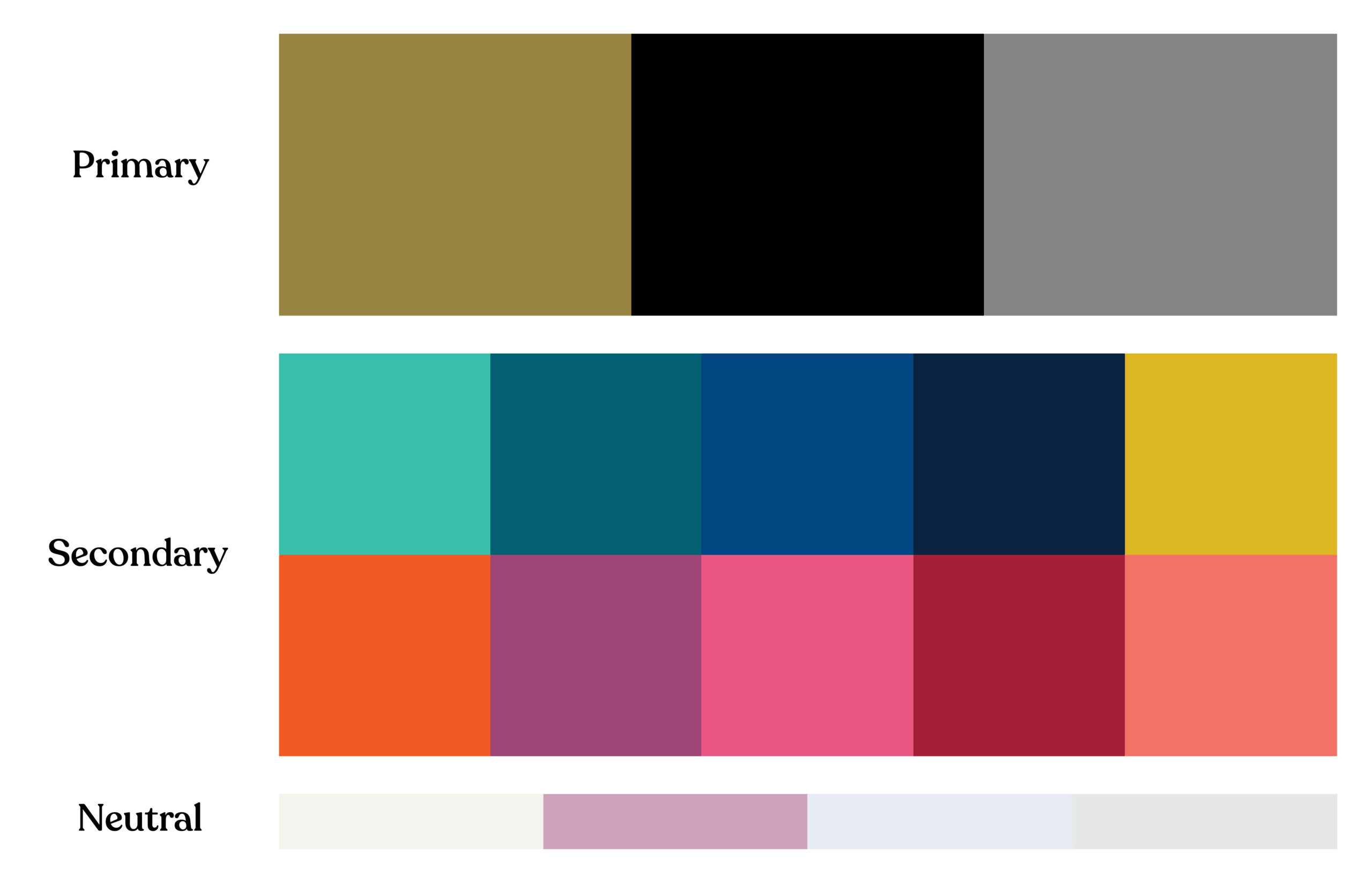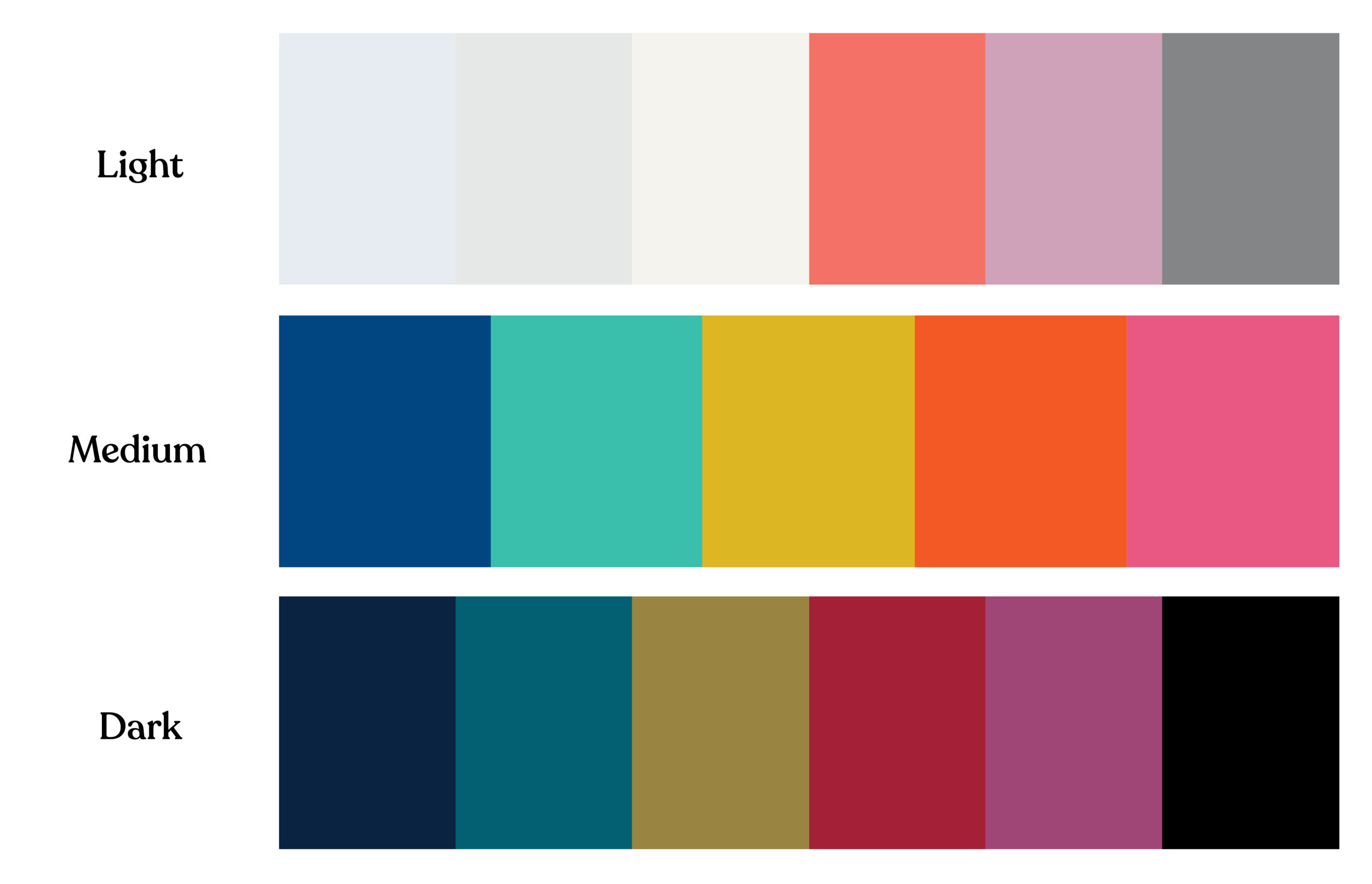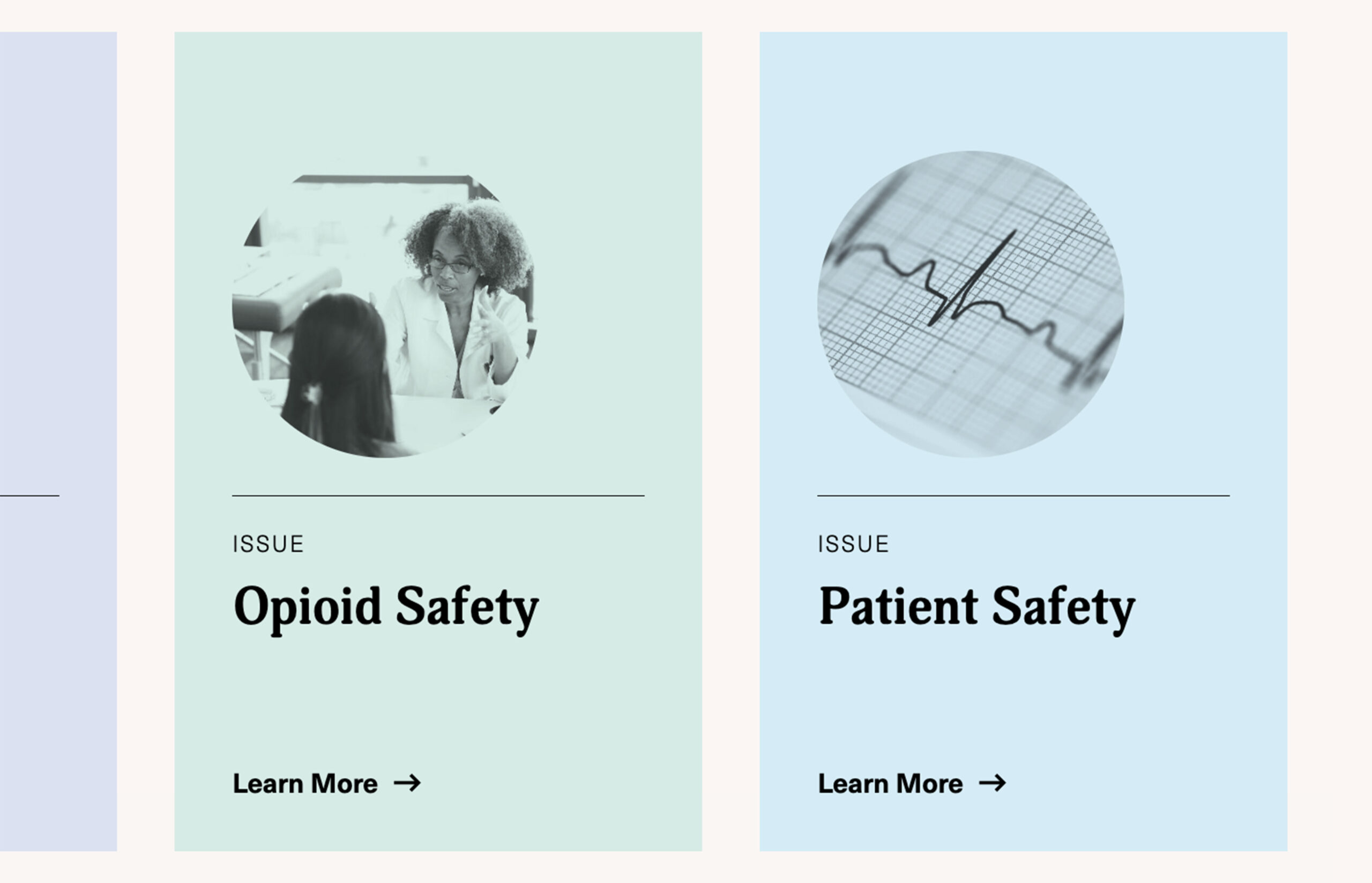Themed vs. Evergreen Event Branding: Which Approach Fits Your Association?
Events are a critical touchpoint for associations, serving as a revenue stream and a platform for meaningful engagement. A well-executed event brand and theme can transform an annual gathering from just another date on the calendar into a must-attend experience. It establishes an emotional connection with attendees, communicates the organization’s values, and sets the stage for long-term engagement.
Associations often face the challenge of balancing tradition with innovation. How do you keep an event fresh each year without losing its identity? Effective branding provides the answer, ensuring consistency while offering room for creativity and evolution. A strong event brand not only drives attendance and sponsorship but also reinforces the organization’s identity, helping to foster deeper member connections and long-term loyalty.
Before exploring the two primary branding approaches, it’s important to understand what we mean by a ‘theme’ in event branding. A strategic theme is not just decorative but should connect to your organization’s identity, values, and audience interests. With that in mind, let’s explore the key strategies for branding your events.
Themed Event Branding
In themed event branding, the event’s visual identity changes entirely each year based on a new theme. Think of it as giving your event a fresh coat of paint annually, designed to excite and re-engage your audience. While this strategy generates renewed buzz and attracts returning attendees, it can also create challenges in maintaining long-term brand consistency and audience retention. Organizations must balance the excitement of a fresh theme with the need to reinforce an event’s value and identity over time.
Pros:
- Keeps things fresh
A new look each year creates excitement and signals something new to attendees. - Encourages attendance
A distinct theme can highlight what’s different and unique about this year’s event. - Offers creative flexibility
A new theme allows dynamic marketing campaigns to align with current trends and audience interests.
Cons:
- Higher costs and effort
Creating a brand from scratch each year demands more time and resources. - Potential misalignment
The theme can impact attendance and engagement if it doesn’t resonate with attendees.
Best For:
- Long-standing events with an established audience that already understands the event’s core value.
- Organizations looking to keep a fresh, dynamic appeal to returning attendees.
Evergreen Event Branding with Annual Themes
An evergreen event brand with an annual theme approach establishes consistency that builds year after year while integrating annual themes to keep things relevant. It should align with the association’s mission statement and long-term strategic goals by reinforcing key values, fostering brand recognition, and ensuring continuity in messaging. Maintaining a steady identity while adapting to industry trends helps associations build stronger relationships with their members in the long run.
Pros:
- Builds brand equity
A consistent event identity strengthens recognition and trust over time. - More efficient marketing
Evergreen elements can be reused, reducing design and production costs. - Supports long-term storytelling
Allows for themes that align with organizational values. - Facilitates early marketing
Core branding elements enable save-the-dates and sponsorship outreach before finalizing the year’s theme.
Cons:
- Requires upfront investment
Establishing a strong evergreen brand takes strategic planning and initial design resources. - Risk of stagnation
If the evergreen branding isn’t periodically refreshed, it can feel stale. Small updates to the design system can help keep things exciting. - Negative Brand Perception Carryover
If one year’s event underperforms, the association with past experiences can hurt future attendance. Address attendee concerns directly and make visible improvements.
Best For:
- Organizations building or re-establishing the reputation of their event.
- Events that benefit from strong brand continuity and long-term audience trust.
Choosing the Right Approach
If your event has an established audience and thrives on fresh, dynamic appeal, an annually themed approach can keep things exciting while reinforcing its core value. For organizations building or re-establishing an event’s reputation, an evergreen brand offers long-term consistency while allowing room for creative variation.
Evaluating the best event branding strategy requires a deep understanding of your audience, organizational objectives, and long-term vision. Start by assessing how your current event branding is perceived—does it generate excitement and recognition, or does it need a refresh? Conducting surveys, reviewing attendance trends, and analyzing sponsorship retention rates can provide valuable insights.
Regardless of the approach, well-executed event branding fuels marketing, drives attendance, and enhances sponsorship opportunities. If you’re unsure about the best strategy for your event, a thoughtful discovery process—and expert guidance—can help you make the right decision.
Why Your Association Needs a Fractional Creative Director
Running an association is a balancing act—managing member needs, promoting events, and juggling day-to-day operations while ensuring your brand remains compelling and consistent. For many associations, creative leadership often takes a back seat, leading to inconsistent branding and missed opportunities to connect with members. That’s where a Fractional Creative Director (FCD) can make all the difference.
At Position, we’ve developed a Fractional Creative Director (FCD) service designed specifically for associations. For a fixed monthly fee, we provide the creative leadership your organization needs to thrive. Here’s what an FCD does, why it’s unique, and how it can transform your association’s marketing efforts.

What Is a Fractional Creative Director?
A Fractional Creative Director is a part-time, outsourced creative leader who provides the same high-level expertise as a full-time creative director—but at a fraction of the cost. Instead of navigating the expense and commitment of a full-time hire, associations can leverage an FCD to oversee brand strategy, guide creative execution, and drive strategic marketing initiatives.
From offering strategic oversight for internal teams and vendors to providing on-demand consulting, a Fractional Creative Director delivers expert advice and leadership exactly when you need it. This ensures your marketing stays focused, your brand remains consistent, and your creative output aligns with your association’s goals.
The Benefits of a Fractional Creative Director for Associations

Cost-Effective Expertise
Hiring an experienced, full-time creative director is often outside the budget for associations. A Fractional Creative Director gives you access to seasoned creative leadership without the full-time expense.

Consistent Branding
An FCD ensures your brand remains cohesive across all marketing efforts, reinforcing trust and credibility with your members.

Strategic Focus
With a Fractional Creative Director, your association gains a long-term partner who thinks holistically and proactively about your brand ecosystem and aligns creative efforts with your broader goals.

On-Demand Guidance
Whether you’re vetting ideas, planning campaigns, or addressing challenges, an FCD provides reliable, expert input when you need it most.

Improved Member Engagement
From recruitment to retention, a Fractional Creative Director ensures a cohesive message across all communications, helping your association resonate with members and strengthening your brand’s alignment with your mission.
Why This Matters for Associations
In today’s competitive environment, associations need to stand out to attract, engage, and retain members. Poorly executed or inconsistent branding can undermine these efforts, making it harder to communicate your value and build trust with your audience.
A Fractional Creative Director helps associations:
- Differentiate themselves in a crowded market.
- Communicate effectively with members through tailored, strategic messaging.
- Build long-term loyalty by delivering a consistent and compelling brand experience.
With an FCD, you’re not just keeping up—you’re setting the standard for how associations connect with their members.
Is a Fractional Creative Director Right for Your Association?
Not every association needs a full-time creative director, but many could benefit from expert guidance. Here are a few questions to consider:
- Does your association struggle with inconsistent branding or messaging?
- Are you lacking senior creative leadership to guide your marketing efforts?
- Would you benefit from a trusted advisor who deeply understands your association’s needs?
- Are you looking for a cost-effective way to improve your marketing quality and consistency?
- Do you need strategic input to align creative efforts with long-term goals?
If you answered “yes” to any of these, a Fractional Creative Director could be the solution you’re looking for.
How Our Fractional Creative Director Service Works

Brand Immersion
We begin by exploring your brand, organization, and challenges in depth. By immersing ourselves in your ecosystem—your positioning, communication channels, and member dynamics—we gain the insight needed to provide tailored, strategic guidance.

Strategic Planning
Monthly planning sessions set clear priorities and identify opportunities to align your creative efforts with organizational goals.

Creative Oversight
We oversee your brand and creative strategy, ensuring all marketing efforts are executed at the highest standard.

Proactive Ideation
Our team continuously identifies opportunities and proposes creative strategies to help your association grow.

Flexible Retainer Model
We offer a fixed monthly fee that includes a small retainer for on-demand design production hours. Individual projects can be scoped separately outside of the retainer.
Without board alignment, even the best initiatives risk falling flat. We bring an external perspective and expert guidance to champion big ideas, articulate their importance, and secure the approval necessary to turn them into action. Once an initiative is complete and ready to launch, we work to get the board’s buy-in and excitement, turning them into champions for the idea—ensuring it gains momentum and has the greatest chance of success.
Let’s Talk
We know the unique challenges associations face, and our Fractional Creative Director service is built to address them. With just a few openings available for new clients, now is the time to see how an FCD can elevate your association.
Feel free to reach out to schedule a consultation or explore how we can support your goals.
How Color Choices Can Improve Accessibility on Your Association Website
Designing a website for an association requires more than just visually appealing aesthetics. Accessibility and usability are critical factors that ensure your website serves all members, including those with disabilities. Among the elements that influence accessibility, color choices play a pivotal role. The right color decisions enhance the user experience and ensure your association’s website complies with the Web Content Accessibility Guidelines (WCAG), making it inclusive for all users.
The Importance of Website Accessibility for Associations
In recent years, Diversity, Equity, Inclusion, and Accessibility (DEIA) has become a priority for many associations. Accessibility is a crucial consideration for member-driven organizations, as it ensures all members can interact with your website. For associations, website accessibility isn’t just a best practice; it can protect you from lawsuits.
The Web Content Accessibility Guidelines (WCAG), developed by the World Wide Web Consortium (W3C), are the international standard for ensuring website content is accessible to all users. Most association websites aim to meet WCAG Level AA compliance, which ensures accessibility for users with visual impairments, such as color blindness and low vision. Understanding how people with visual impairments experience your website can help you identify areas for improvement. Try this color blindness simulator to see your content through their eyes.
The Importance of Planning for Accessible Colors
While color contrast guidelines can initially seem restrictive, thoughtful planning enables dynamic, visually compelling designs that are also accessible. When developing or updating your association’s brand color palette, it’s important to include a full range of colors: dark, medium, light, and neutrals. A robust palette ensures flexibility for a variety of applications, such as event visuals, sub-brands, and complex website layouts, without sacrificing accessibility.
Taking the extra step to test the contrast ratios of your color pairings early in the process ensures that they meet accessibility standards. This approach helps confirm that your colors can be used effectively across different design elements, like text, buttons, and call-out boxes, while maintaining compliance with ADA or WCAG guidelines. With intentional planning, you can achieve designs that are both creative and inclusive.
Understanding the Impact of Color on Accessibility
Color choices on your website significantly affect its accessibility. For example, poor color contrast can make your content difficult to read for users with visual impairments. According to WCAG Level AA standards, text should have a contrast ratio of at least 4.5:1 for normal text and 3:1 for larger text to ensure readability for all users.
Some common areas where color contrast issues often arise include:
- Text over images or videos: Text placed on top of images or video backgrounds can become unreadable if the contrast between the text and the background isn’t sufficient. It’s essential to check that the text remains legible, regardless of the background.
- Call-out boxes: Using mid-tone colors for call-out boxes can lead to poor contrast between the background and the text. Opt for either dark or light backgrounds paired with high-contrast text to ensure readability.
- Buttons and navigation elements: Vibrant colors are often used to make buttons stand out. However, if the contrast between the button’s background color and the text is too low, some users may struggle to read it. Similarly, relying solely on color to identify links can make it difficult for users with color blindness to navigate your website.
Legal Risks of Non-Compliance
Failing to comply with color accessibility guidelines can have legal repercussions. ADA-related website accessibility lawsuits are on the rise, and non-compliance with WCAG standards can expose your association to legal action. Associations are particularly vulnerable due to the public-serving nature of their websites. Ensuring your color choices adhere to WCAG guidelines mitigates legal risks and demonstrates your commitment to inclusivity.
Best Practices for Choosing Accessible Colors
To create an accessible and visually appealing website, associations should follow best practices when it comes to color. Here’s how you can ensure your color choices are both compliant and user-friendly:
1. Test Color Contrast Early and Often
Testing your color contrast during the design phase is crucial. Tools like WebAIM Contrast Checker allows designers to measure contrast ratios and ensure that all color pairings meet WCAG Level AA standards. Testing regularly throughout the design process helps avoid costly revisions later.
2. Design for Mobile Accessibility
With many users accessing association websites via mobile devices, color contrast must be tested across different screen sizes. Website elements can shift or scale on smaller screens, making color contrast appear differently than on desktops. To ensure readability and accessibility, your design team should test how colors display on all devices.
3. Avoid Using Color Alone to Convey Information
WCAG emphasizes that information should not rely solely on color. For instance, if you use color-coded charts or infographics, ensure that there are additional markers, such as patterns or labels, to distinguish between different data points. This ensures that users who cannot perceive color differences can still understand the information being presented.
For example, in a pie chart showing different membership categories, don’t rely solely on colors to differentiate segments. Instead, add patterns, distinct shapes, or labels directly on the chart to make it clear which segment corresponds to which category.
4. Consider Cognitive Disabilities in Your Color Choices
Color choices can affect not only users with visual impairments but also those with cognitive disabilities, such as ADHD or dyslexia. Bright, overwhelming colors can make it difficult for users to focus on content, while inconsistent color patterns can create confusion.
5. Continuously Test and Reevaluate Your Color Choices
Accessibility isn’t a one-time fix—it’s a continuous process. As you update and edit your website, be sure to regularly test new content for color contrast and accessibility. Implementing a regular color audit process ensures ongoing compliance and improves the user experience for all visitors.
Color Choices Empower Accessibility
Color plays a critical role in the accessibility and usability of your association’s website. By making thoughtful color choices and adhering to WCAG guidelines, you can ensure that your website is both visually appealing and inclusive for all members. Prioritizing color accessibility isn’t just about meeting legal requirements—it’s about creating an experience that serves all users, regardless of their abilities.
Tips for Building Better Pages on Your Association Website
Association marketing teams face a unique challenge after launching a new website. Your team is responsible for planning, publishing, or approving any new pages, while protecting its design integrity and the strategy it was built upon. These new pages need to perform at the same high level as the rest of your website.
We have seen many internal marketing teams consistently put significant effort into developing content (program, services, campaign, etc), but fall short in the delivery of that information when it comes time to add it to the website. This disconnect hinders your communications and marketing efforts and contributes to a steady decline in your website’s user experience.
To prevent this, it’s crucial to follow a few key best practices when creating new pages. This will ensure your website continues to support your association’s goals while delivering a seamless experience for your users.
Understand User Intent and Behavior to Inform Page Layout
Aligning any new page with how users will interact with your content is the first step toward creating an effective, user-friendly design. Your association’s website pages should be organized to support one of three key user behaviors:
1. Browsing
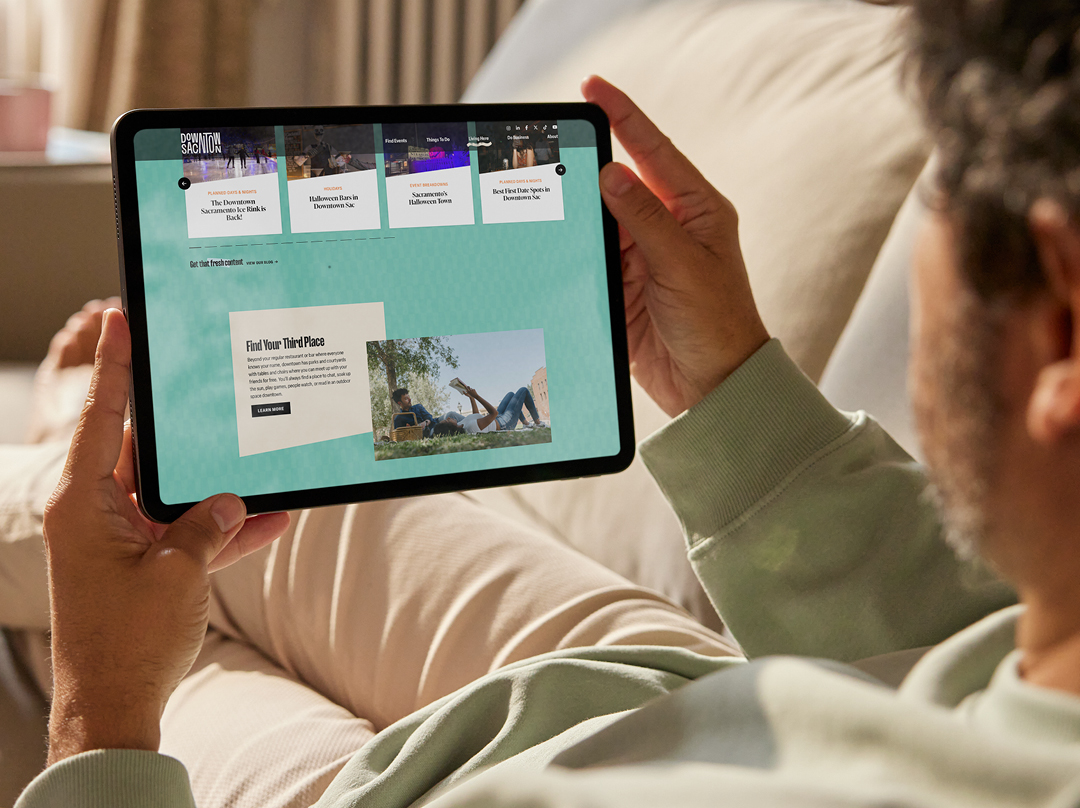
When users browse high-level pages, they’re deciding whether to engage further. Website pages such as member benefits, services, event pages, or special initiative landing pages demand easily scannable, bite-sized content.
Users typically will first skim headlines, photos, pull quotes, and graphics before committing to reading body copy or clicking links. You should provide plenty of scannable elements on browsing pages to increase engagement opportunities.
A single column of dense text can look daunting to your users who haven’t committed to digging deeper yet. Breaking information into digestible chunks and/or multi-column layouts allows them to find information faster. Users often browse information in a non-linear fashion, so organize your content accordingly.
2. Researching

Users engage with these pages once they are interested enough to dig deeper into your website to find specific information. Pages such as articles, resources, or event details target a motivated audience, and the layout should enhance their experience.
Clear, compelling headlines and subheadings remain important to guide users to information. You should also enhance the page’s content with photos, videos, and other graphics to explain concepts that words alone may not be able to convey.
3. Action

When users reach a page intended to drive a specific action, your layout needs to get out of their way. Action-oriented pages like newsletter sign-ups, member registration, or event registration forms should feature a direct, less-is-more approach. You’ve already sold your users on what you have to offer, so keep the page focused on the desired action.
Key Design Principles for Building Effective Pages
Once you understand your user’s goals, you can build a page that will deliver an effective user experience. Depending on your website, your CMS may have tools in place to enhance how your page looks and functions.
For example, WordPress includes Gutenberg blocks that your team can use to create page layouts. When you work with Position, we go a step further and build a custom set of common layout elements so new pages seamlessly integrate with the rest of your website.
Most new pages begin with a cut-and-paste from a text document. But you can’t stop there. The first step to creating visual interest is using headlines and subheads to create a visual hierarchy. Then, incorporate one or more images to add aesthetic value while also enhancing and reinforcing your content. The types of images you choose reinforce your content while also enabling members to see themselves in your brand.
For many pages, a clear headline structure and the right image or two are enough to be effective. For more complex pages, especially those designed for browsing, consider using columns, image galleries, and videos to organize your content in a digestible, logical way.
To elevate your page layouts and create a more intuitive and engaging user experience, consider these fundamental design principles:
Hierarchy

A clear visual hierarchy guides users through what’s most important on a page. Think about what you want your users to see first, second, and third and so on. What are they looking for? If they only notice one element on the page, what should it be?
A visual hierarchy is often communicated through scale. People naturally look at bigger images and headlines first. But you can also express importance by placing information higher or lower on the page or using design principles like color, contrast, and whitespace to underscore key details.
Semantic headings (H1s, H2s, H3s) help users understand where they should look first. Remember, not everything on a page can be important at once. Establishing a hierarchy makes it easier for users to find the information they need.
Rhythm & Flow

Users become fatigued seeing the same layout on every page. Keep readers engaged and avoid monotony by balancing text-heavy sections with scannable content. Color, photos, illustrations, and graphic elements are just a few ways to maintain user interest and guide their eye along a page.
However, you have to be careful, as incorporating too many elements will make your design chaotic and hard to follow. Strike a balance between consistency and variety in a way that strategically allows certain details to stand out and create a pleasing user experience.
Maintaining Accessibility Is Crucial for Associations
As you add new content to your association’s website, be vigilant about ensuring it remains accessible to users. Accessibility not only keeps your organization in compliance with the law but also boosts your site’s SEO.
Maintaining your website’s accessibility is a topic that could fill an entirely separate article. However, here are a few guidelines to keep in mind:
Image and Video Accessibility
Always add alt tags to non-decorative images and captions to videos, ensuring that users with screen readers will understand the visuals on your pages.
Proper Heading Structure
Using appropriate heading tags for headings (H1, H2, H3, etc.) enables users to understand how information is structured. Screen readers rely on these tags to interpret the page’s layout, so ensure each section is introduced with an appropriate heading.
Unique Page Titles
Every page on your website should have a unique, descriptive title. This practice not only helps with SEO but also allows users to understand the content of each page.
Correct Use of Lists
When formatting lists, use numbered or bulleted styles appropriately. This helps screen readers convey whether the items are in a specific sequence or not, making it easier for all users to navigate and understand your content.

Empower Your Team to Create Polished, Effective Pages
After you and your team launch a redesigned website, you have to protect your association’s investment. Keeping your website updated with fresh content is key, but so is ensuring every page serves your members, your association, and your brand.
The impact of one poorly designed page may seem minimal. However, over time, the cumulative effect can compromise your website’s effectiveness and diminish trust among current and potential members.
If you adhere to these best practices, you can confidently create and publish new pages that maintain design consistency while elevating your website’s impact.
User Interface is Key to Stronger Association Websites
Your association’s website is the digital face of your organization. It’s often the first point of contact for prospective members, and it sets the tone for every subsequent interaction.
Your website’s user interface (UI) — its visual appearance, interactivity, and overall feel — plays a crucial role in shaping that first impression. How your website looks, what it says, and how it’s organized all express details about your association to its audience. Even the images on your website underscore your identity and help potential new members see themselves in your association.
These visual elements aren’t the product of aesthetic preferences. They’re strategic design decisions that impact your association’s ability to communicate with its audience. A thoughtfully designed UI elevates your brand, enhances your messaging, and creates a stronger connection with your audience.
The Power of a Comprehensive Brand System
Before you determine the visuals that make up the core of an engaging and intuitive UI, you need to develop the right tools. A well-developed brand system forms the bedrock of an effective user interface design.
A brand system provides more than a recipe for your association’s logo, color, and text specifications. It’s a comprehensive framework encompassing your brand’s visual and verbal identity and how you express those details to your audiences. A brand system includes the specifics of your association’s voice and tone, messaging, values, and more.
When applied to your website’s user interface, the elements of your brand system create a toolbox to express the character of your organization. Fonts, patterns, and color palettes set the tone for your website’s content. The right design elements communicate your organization’s personality, for example, that your organization is warm and people-driven, or perhaps that it’s more clinical and academic.
A brand system ensures your website’s user interface does more than look appealing and function in an intuitive way. It also expresses who you are as an organization.
Key Elements of a Strong User Interface
Your audience of current and future members will perceive a lot of information from how your website’s user interface functions. An appealing UI draws your members toward what they need and builds affinity with your association and its website.
The visual aesthetic of your website’s UI expresses the character of your organization. Each of the following elements plays a vital role in creating an engaging and intuitive experience.
Visual Hierarchy: Guiding the User Journey

A well-organized design enables your members to explore your website to find the information they need. However, a strong visual hierarchy clearly indicates the most important information on every page to create an intuitive user experience.
Strategic use of scale, contrast, white space, and color create visual order to your website. This visual hierarchy reduces cognitive load for your users while enabling them to find information quickly and easily.
Design Consistency: Building Trust and Credibility
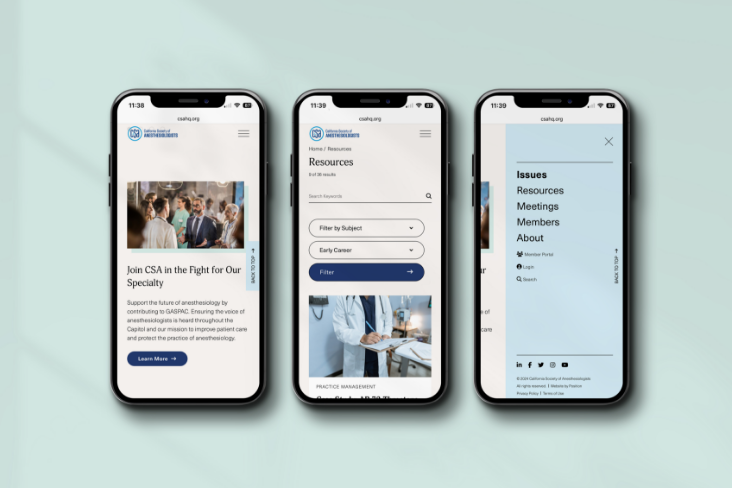
With a brand system, your association gains a valuable framework for expressing its story through design. A consistent execution of visual details across your website communicates trust and reliability to your users.
This should extend to resources like job boards or event calendars, which may incorporate external functionality. Maintaining a consistent, cohesive UI throughout your site enhances your organization’s credibility.
Rhythm and Flow: Enhancing User Engagement

A well-designed layout creates a flow that promotes the right behavior, whether guiding users to complete a specific objective or encouraging further browsing. For example, a page guiding users to submit a form should minimize the steps needed to complete the action and eliminate distractions. Pages meant for browsing and education should create a clear layout of information for users and lead them to the next action you would like them to take.
Users also grow fatigued seeing monotonous layouts while navigating longer pages. Balancing text-heavy sections with scannable content keeps users engaged, while varied design elements on the page maintain interest and guide the eye.
Photo and Video: Bringing Your Story to Life

Professional photos and videos are powerful tools for building engagement and enhancing your website’s narrative. Plus, they enable prospective members to see themselves in your organization based on who appears on screen.
Member-driven associations are often tempted to use candid photos and videos taken by staff to create an authentic reflection of their identity. This inclusion of members in your website’s visuals is an effective way to connect with current and prospective members. However, professional-quality photos and videos will better reflect your organization’s professionalism and respect your members by portraying them in the best light possible.
Download Ebook
Elevating Your Association’s Communication Through Thoughtful UI Design
A well-crafted user interface is essential to creating a successful, member-first website. When designed thoughtfully, the visuals making up your UI are a powerful tool that enhances your association’s messaging while forming a stronger bond with the next generation of members. By working with a partner who understands the specific needs of associations and has years of elevated design experience, you’ll create a user experience that seamlessly serves members and your organization. If this sounds like the kind of approach that will help your organization extend its digital reach, we should talk.


